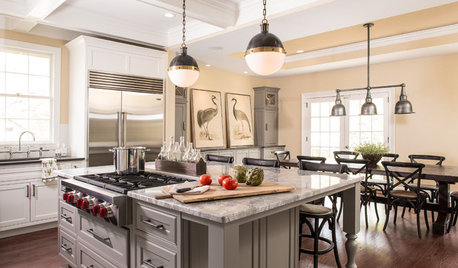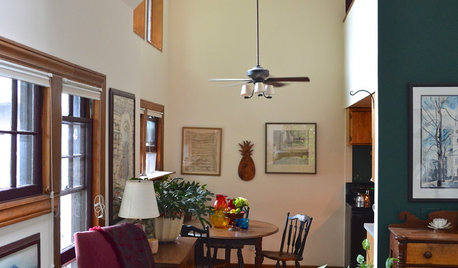How to insulate walls of addition in 1920's frame house?
bobbie46
12 years ago
Related Stories

MATERIALSInsulation Basics: What to Know About Spray Foam
Learn what exactly spray foam is, the pros and cons of using it and why you shouldn’t mess around with installation
Full Story
REMODELING GUIDESCool Your House (and Costs) With the Right Insulation
Insulation offers one of the best paybacks on your investment in your house. Here are some types to discuss with your contractor
Full Story
KITCHEN DESIGNKitchen of the Week: Warming Trend in a 1920s Georgian
Renovation creates a formal yet functional and relaxed hub for entertaining — and takes care of the insulation problem
Full Story
KNOW YOUR HOUSEKnow Your House: The Basics of Insulated Concrete Form Construction
Get peace and quiet inside and energy efficiency all around with this heavy-duty alternative to wood-frame construction
Full Story
GREEN BUILDINGInsulation Basics: Designing for Temperature Extremes in Any Season
Stay comfy during unpredictable weather — and prevent unexpected bills — by efficiently insulating and shading your home
Full Story
GREEN BUILDINGInsulation Basics: Heat, R-Value and the Building Envelope
Learn how heat moves through a home and the materials that can stop it, to make sure your insulation is as effective as you think
Full Story
WINDOW TREATMENTSEasy Green: 9 Low-Cost Ways to Insulate Windows and Doors
Block drafts to boost both warmth and energy savings with these inexpensive but effective insulating strategies
Full Story
GREEN BUILDINGInsulation Basics: Natural and Recycled Materials
Consider sheep’s wool, denim, cork, cellulose and more for an ecofriendly insulation choice
Full Story
HOUZZ TOURSMy Houzz: Casual, Thoughtful Design for a 1920s Bungalow
A couple turn a neglected, run-down home into a charming, comfortable place to raise their 4 children
Full Story
HOUZZ TOURSMy Houzz: Light and Airy 1920s Seattle Apartment
Bright walls, warm woods, 'eclectic ancestor' style and lots of natural light mark this 1920s apartment
Full Story









User
SpringtimeHomes
Related Professionals
Corcoran Kitchen & Bathroom Designers · Newington Kitchen & Bathroom Designers · Londonderry Kitchen & Bathroom Remodelers · Sweetwater Kitchen & Bathroom Remodelers · South Jordan Kitchen & Bathroom Remodelers · Jacinto City Interior Designers & Decorators · Fernway Interior Designers & Decorators · Fort Smith Interior Designers & Decorators · Clive General Contractors · Converse General Contractors · New Bern General Contractors · Noblesville General Contractors · Palestine General Contractors · Rancho Cordova General Contractors · Rancho Santa Margarita General ContractorsBilll
bobbie46Original Author
User
ideagirl2